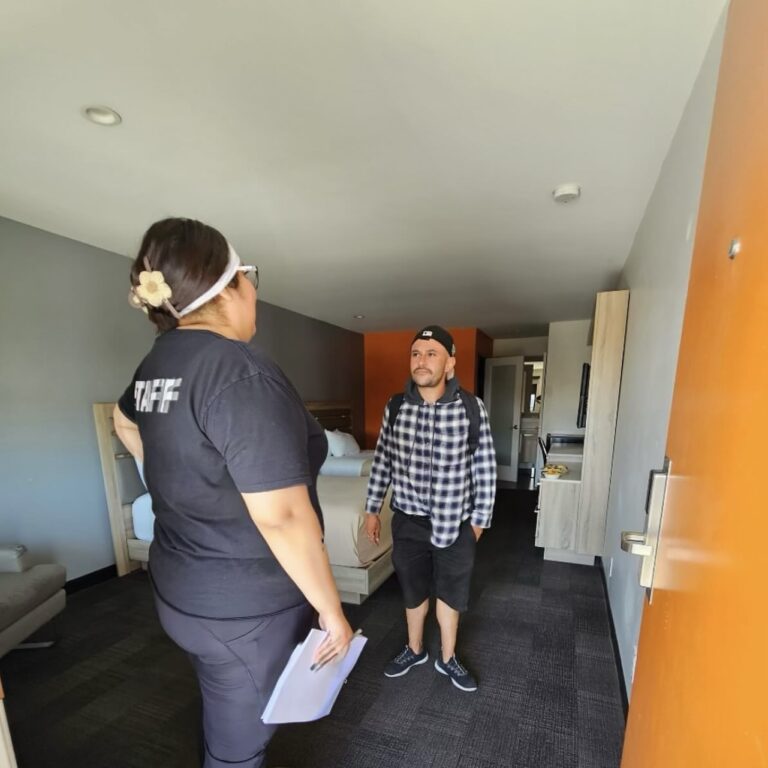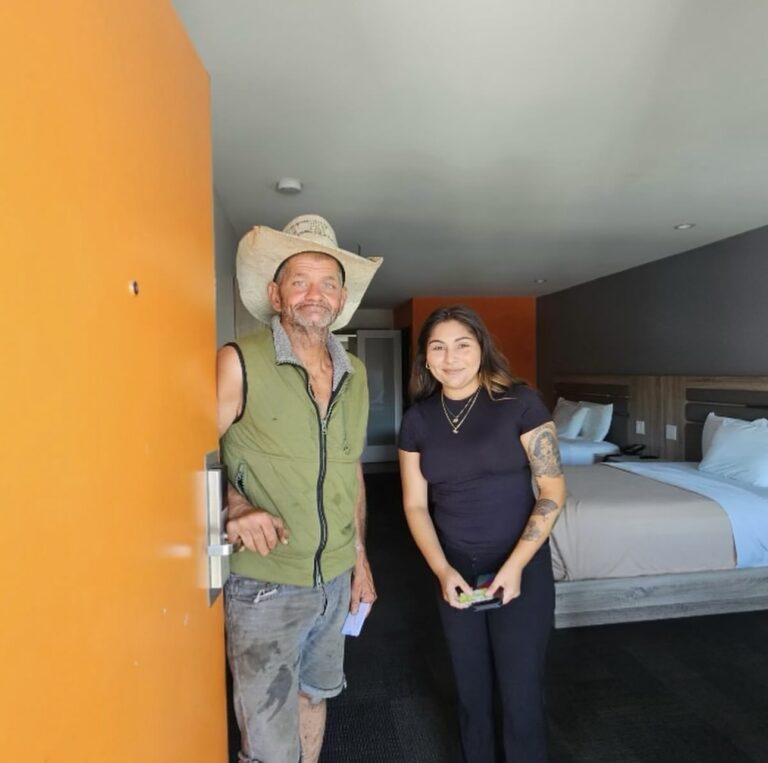Inside Safe




Los Angeles Needs a FEMA-Like Response to the Homeless Crisis
If a major earthquake in Los Angeles left 100,000 people unsheltered, the city would respond with emergency shelters within 24 hours. The homeless crisis should be treated with the same urgency.
Over a year ago, I made this comparison, and Mayor Karen Bass seems to agree. Her first action as mayor was to declare a state of emergency on homelessness. This declaration won’t solve the issue overnight or increase funding immediately, but it allows the removal of bureaucratic hurdles delaying housing construction.
A key part of this declaration is the “Inside Safe” program, which will move people from tents and encampments to hotels and motels temporarily until affordable housing is built.
At Hope the Mission, we share the belief that the streets shouldn’t be a waiting room for permanent housing. Since our founding in 2009, we’ve operated 17 facilities across the city, following a ‘housing first’ model to provide temporary and supportive housing.
Our Tiny Home villages, established with the City of Los Angeles, offer interim housing with beds, locks, pet areas, hygiene trailers, and on-site staff to assist with various needs. This model supports the necessity of both interim and permanent housing solutions.
Mayor Bass challenged the city to actively participate in making the dream of a better L.A. come true. Her goal of housing 17,000 people in her first year requires a coordinated effort from the mayor, city council, county, and organizations like Hope the Mission.
Hope the Mission’s success lies in a holistic approach to housing, addressing medical, mental health, and substance abuse issues. In 2022, we moved over 420 people from interim to permanent housing. The first step is getting people off the streets and into a safe environment, followed by helping them move from survival mode to stability.
Despite the overwhelming sight of encampments, Angelenos can achieve great things when united. Mayor Bass emphasized that “if people link arms rather than point fingers, lives will be saved.”
Hope the Mission is ready to partner with Mayor Bass to tackle the homelessness crisis in Los Angeles.
Ken Craft, Founder and CEO of Hope the Mission
It is time for the City of Los Angeles to address the homeless crisis with a FEMA-like response.
If there was a major earthquake here in Los Angeles and 100,000 people were suddenly unsheltered, within 24 hours, there would be makeshift shelters available to ensure families, senior citizens, and our neighbors, would not have to sleep outside. It would be a state of emergency.
I made this comparison over a year ago and Mayor Karen Bass seems to agree with me. Instead of kicking the can down the same road, Mayor Bass’ first act as leader was to declare a state of emergency on homelessness. This emergency declaration doesn’t immediately solve the issue, and it won’t make more funding magically appear. However, it will allow Mayor Bass’ administration to remove rules and regulations that prevent or delay construction of permanent or temporary housing.
Part of this emergency declaration will include the program, “Inside Safe,” which will move people from tents and encampments to hotels and motels. It’s a temporary solution until a more permanent one, affordable housing, can be built.
I appreciate that Mayor Bass and myself share a similar belief, that the streets shouldn’t be a waiting room for permanent housing. It’s a principle Hope the Mission (formerly Hope of the Valley) has followed since we were founded in 2009.
Hope the Mission works to prevent, reduce, and eliminate poverty, hunger, and homelessness by offering immediate assistance and long-term solutions. We operate 17 facilities across the city, focusing on a ‘housing first’ model. When housing is available, it is cruel and inhumane to leave people on the streets, and that’s why we have spent the last 13 years building and providing temporary, supportive housing.
Hope’s Tiny Home villages, established in partnership with the City of Los Angeles, are an example of interim housing that goes beyond the traditional shelter model. Our residents have beds, doors that lock, a dog run for their pets, access to washers and dryers, hygiene trailers equipped with showers, and staff on-site to assist with anything from addiction recovery to obtaining IDs. While the city builds affordable housing, it’s not either or, it’s yes and–we need interim housing and we need permanent affordable and supportive housing.
In Mayor Bass’ inauguration speech, she issued a challenge, “I call on the people of our city to not just dream of the L.A. we want, but to participate in making the dream come true.”
Mayor Bass’ ambitious goal of housing 17,000 people within her first year cannot be done alone, it will take a village. Hope the Mission has the expertise, the experience, and countless stories of hope that demonstrate our housing with supportive services approach works.
The “Inside Safe” program will only be successful if there is a coordinated response between the mayor, city council, the county, and organizations like Hope the Mission. Hotels and motels are a great first step in ensuring that people have a safe place to live–but sometimes the problems that unsheltered people face cannot be solved with housing alone. Hope the Mission’s temporary housing programs are successful because the goal is to heal the whole person, regardless of the circumstances that led them to experience housing insecurity.
We measure the success of our programs in stages, but the ultimate proof point is the number of people we can move to permanent housing. In 2022, Hope the Mission was able to move over 420 people from interim housing into permanent housing. The first stage is getting people out of the elements and out of survival mode.
We know that staying somewhere safe and welcoming has the potential to get people back onto their feet. Once sheltered, the next stage is to move people out of survival mode and into possibility mode. Our team works diligently to provide necessities like personal protection, hygiene, and sustenance. We also set people up with sources of income — whether through finding a job or a form of public assistance — and also provide medical and mental health services, substance abuse counseling & recovery, and permanent housing placement. We provide everything they need so they are able to start preparing and planning for an independent future.
Driving past countless encampments can certainly make it feel like an insurmountable issue to fix. But Los Angeles is an incredible city and when Angelenos set their minds to do great things, they get it done.
The hard work ahead can only be achieved if we work together; Mayor Bass also said at her inauguration that “if people link arms rather than point fingers, lives will be saved.”
Hope the Mission has been doing this work for over a decade and we’re ready to partner with the Mayor to house and help all Angelenos.
Mayor Bass, we look forward to working together to solve the humanitarian crisis of homelessness in
Los Angeles.
Ken Craft is the founder and CEO of Hope the Mission, formerly Hope of the Valley.
